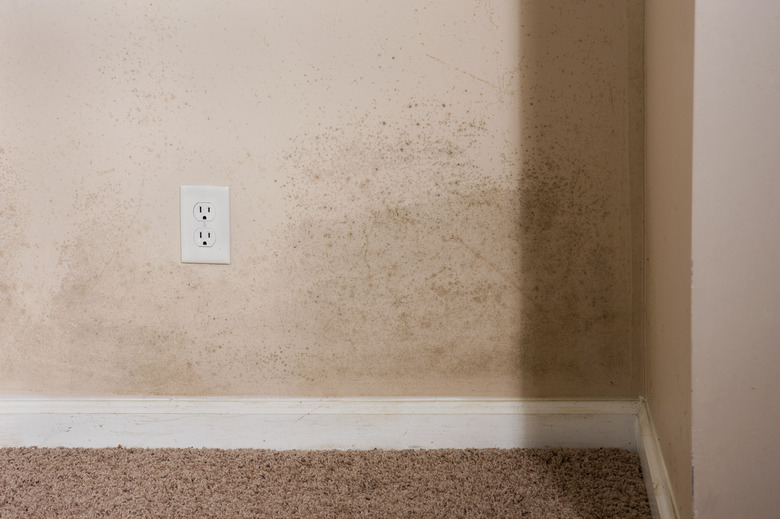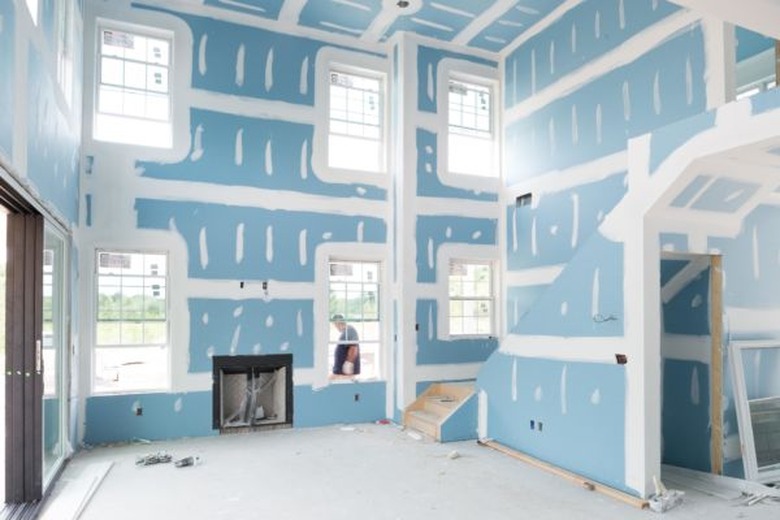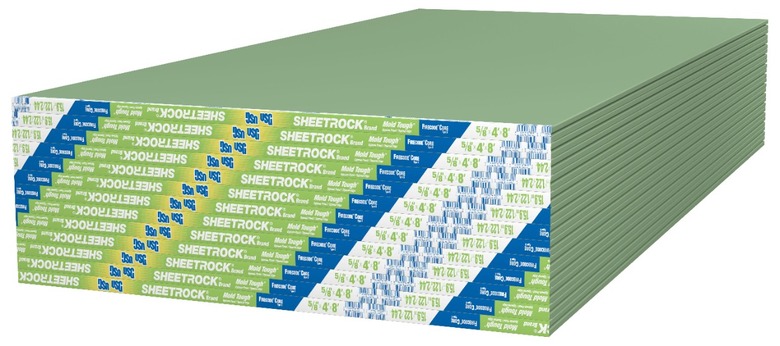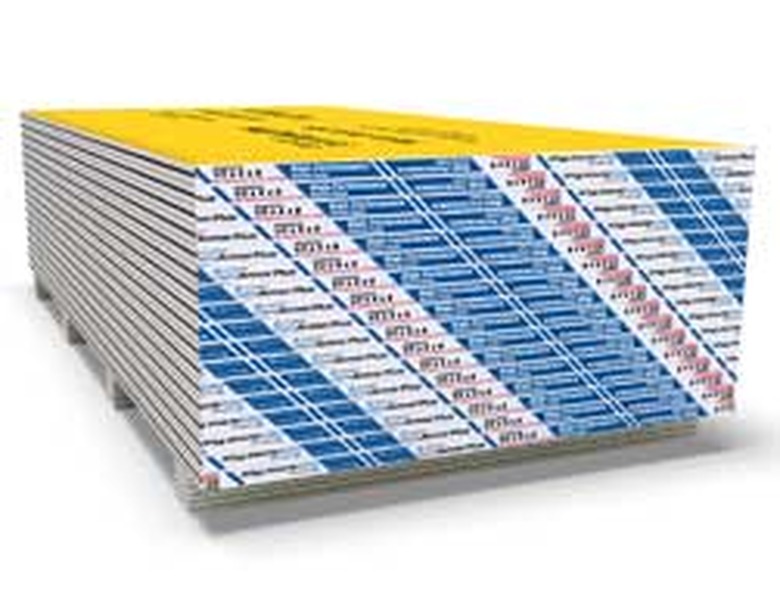What Is Mold-Resistant Drywall?
Drywall is a very handy, cost-efficient building material, but it's also a relatively vulnerable material. That's why, in addition to standard drywall, there are several "upgraded" versions, including fire-resistant, sound-resistant, impact-resistant and moisture-resistant panels. Drywall manufacturers have also tried to address mold, a particular problem for drywall, thanks to its paper facing that makes great food for mold fungus as soon as it gets wet. So, will an upgrade to mold-resistant material mean you never have to worry about mold in your bathroom or basement? It's hard to say; it depends on how much moisture you get.
Why Mold is a Problem for Drywall
Why Mold is a Problem for Drywall
Mold spores live in the air we breathe. They're always there and there's no way to get rid of them. But we don't notice them until they settle on a surface and start to grow. And all it takes for spores to transform into visible mold is oxygen, moisture and an organic food source. Drywall is made with a core of gypsum (a natural mineral, the same main ingredient in plaster of Paris) covered by paper, an organic cellulose material.
Since your house is full of oxygen, and your walls and ceiling are covered with paper, all you need is prolonged moisture to create the perfect breeding ground for mold. If your basement floods, or if you have a leaky drain or water pipe, or if your bathroom stays damp for long periods of the day, you've got the necessary moisture, and the mold growth begins. Mold does particularly well on standard drywall because the paper absorbs moisture, and once it gets really wet, it stays wet.
What Is Mold-Resistant Drywall?
What Is Mold-Resistant Drywall?
Since the paper on drywall holds water and feeds mold, you might think that mold-resistant drywall simply does away with the paper facing, but this is not necessarily so. Some versions have paper facings just like standard drywall and, indeed, look and feel just like standard drywall (except their color). The difference is that the paper and the gypsum core are less absorbent and they contain mold inhibitors that resist mold growth.
There are also versions of mold-resistant drywall made without paper. One type has fiberglass facings instead of paper, while another simply has no facing—it's just a solid gypsum-based material from front to back. What's common among all mold-resistant drywall products is that they also claim to be moisture-resistant, which makes sense, considering that mold requires moisture. Many mold-resistant panels also have special properties such as extra fire-resistance or resistance to dents and scratches.
So, which mold-resistant drywall works the best? The answer is unclear, since there really isn't data that shows how well these products work in the field, in real homes. All of the leading products seem to score the same top scores on ATSM mold-resistance tests, so there's no help from the independent study people. A true answer will require a statistical poll of many contractors and homeowners who have used these products, comparing their water problems and resultant mold issues. No such data currently exists, so all we have are the manufacturers' assertions about their products.
As one measure of relative performance, you might look to products that are approved by the manufacturer for installation in "wet areas," like showers and tub surrounds. If a product can claim that kind of moisture-resistance, it's definitely superior to standard drywall in that regard and will be less susceptible to mold.
Where to Use Mold-Resistant Drywall
Where to Use Mold-Resistant Drywall
You may recall an older version of moisture-resistant drywall, commonly known as "greenboard." It was often used in bathrooms, utility rooms, laundry rooms and other areas that are likely to be very humid due to the amount of water used in the room. Today's mold-resistant drywall is designed for similar applications; it is more moisture-resistant than greenboard and is also mold-resistant, which greenboard was not. Use it for walls and ceilings that may frequently be damp from water vapor or from occasional splashes, such as from hand-washing, mopping or even bathing.
You can also use mold-resistant drywall as a tile backer in dry areas that occasionally get wet, such as a kitchen backsplash or bathroom walls outside of shower and bath areas. Do not use it as a tile backer in a shower or tub surround. It is not a substitute for cement board.
Probably Won’t Help in a Flood
Probably Won't Help in a Flood
Mold-resistant drywall is designed to resist mold growth due to surface moisture and water vapor. Flood water, or even a serious leak, is different. When water gets behind the wall or ceiling surface and dampens the insulation or framing, the drywall has to be removed and discarded, no matter what type it is. No manufacturer of mold-resistant drywall warranties its product against mold, and it's unlikely any manufacturer ever will. Considering that mold literally is everywhere, how could they?



